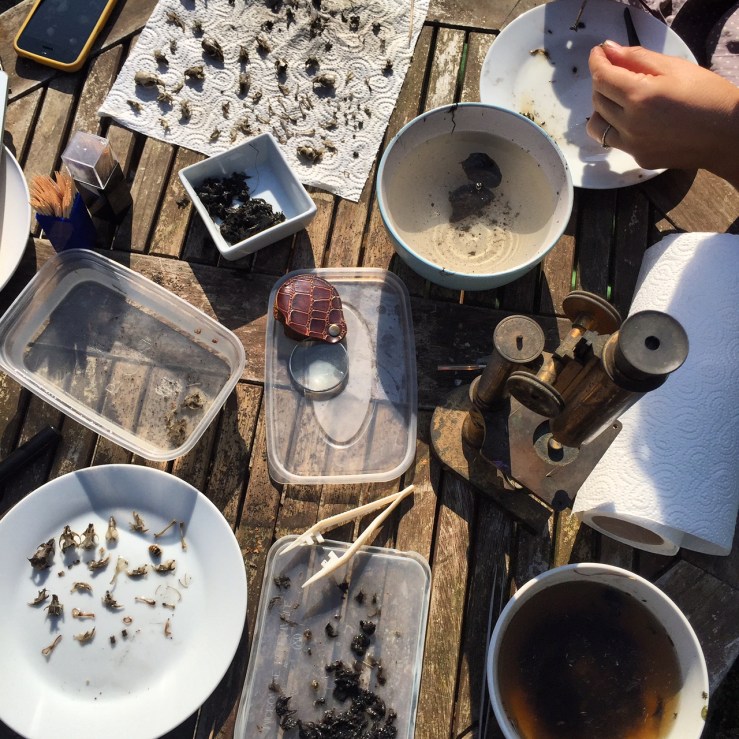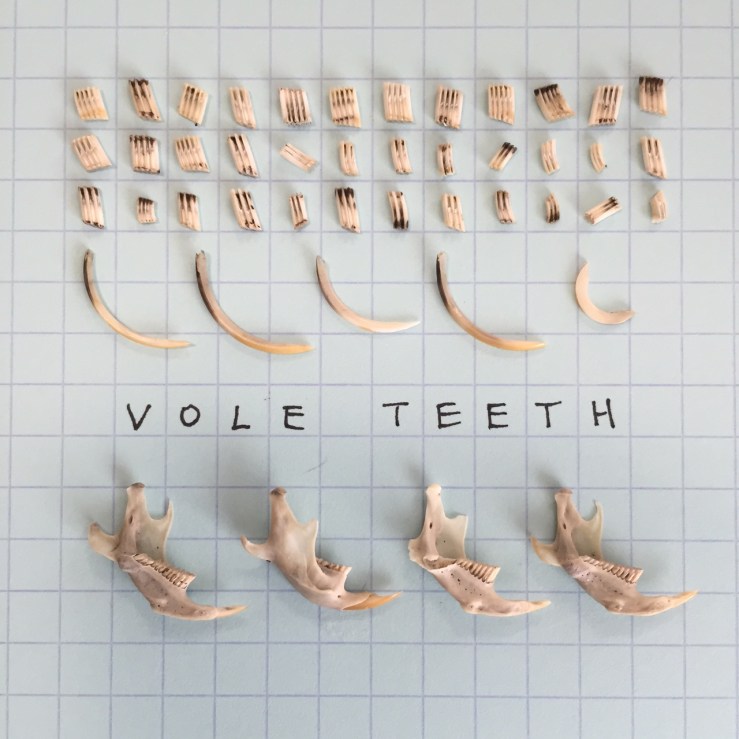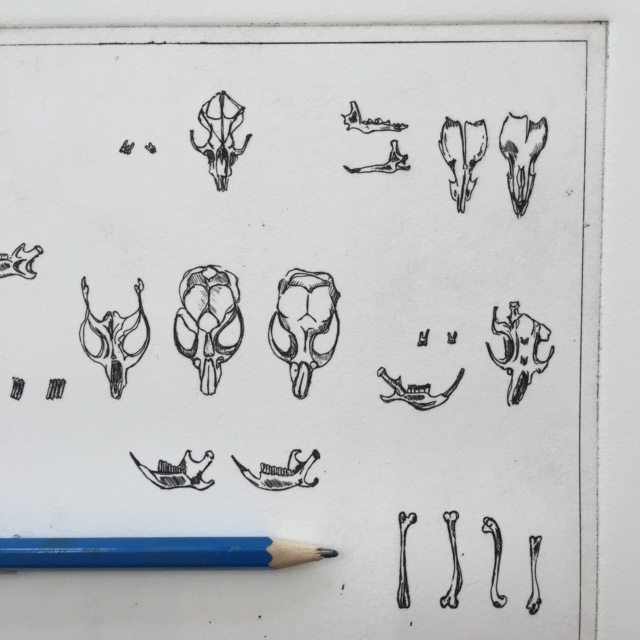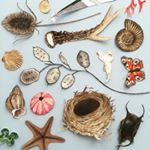For years I’ve been prodding about by fence posts and farm buildings, searching for an owl pellet, a package of goodies first brought to my attention in childhood nature books; to no avail.
A few months ago I went to stay with some friends who were showing me some buildings they are restoring. We were in the vast barn admiring the immaculately tiled roof and there on the floor was a little pile of, well it looked like dog poo really. But it was underneath an OWL BOX.
On closer inspection my suspicions were confirmed and I had found my first owl pellets. It was pretty exciting but I acted cool as I scooped them into a Tesco bag.
Barn Owls eat any sort of small rodent bird or frog they can get their talons on. They swallow these furry snacks pretty much whole and all the bits that can’t be digested are compressed in the gizzard. The mucus covered parcel of teeth, fur, beaks and bones is then hoiked up and lands in a little pile under the roosting site.
Click here to look at Barn Owl facts on the Barn Owl Trust website.
The dreaded clothes moths lay their eggs in owl pellets so that the hatched larvae can feast on the fresh fur, therefore it is important to freeze the pellets in a sealed container before bringing them out in your house. Luckily no one looks in my freezer.
After defrosting my handful of pellets were hard and I’d read that one should soak them in warm water to make them easier to pull apart. They looked really disgusting at this point. If you can imagine some sort of dried, defrosted poos with grey mucus and bits of fur and bone poking out. I poured boiling water over them in the hope that anything not killed off by freezing would be truly got rid of. And then as they softened and began to expand upon stirring, there was a surprising aroma. The brown soup smelt of clean wet fur. The smell which reminded me of sunny afternoons with dogs and sprinklers and baths and pet shampoo was such a contrast to the little bowl of eaten animal bits that it made me feel much more queazy than the whole gizzard/digestion/bones situation.

I pulled apart each pellet with cocktail sticks and tweezers and began to find skulls and bones, tiny ones, and teeth and whiskers and some bits which were not very well digested. There was a tail that came out with its bones still connected and the hairs on the skin. I preferred the bits which were just bone.
When the bits were all cleaned up and dried – which took ages and got tedious – I got out my brilliant chart from the RSPB and felt excited all over again.
Click here to look at the RSPB identification chart.
I found that all the weird little grey balls which had been detaching from the skulls and floating on the water were ear capsules. And you identify different small rodent skulls by their teeth, they all have different patterns and shapes. Pull a tooth out with a tweezer and see if it has roots – bank vole, or ridges – field vole. Common shrews have pink tipped teeth.

There were many bits the same. Endless vole legs and shrew teeth, I was longing to find a bird or even better, a bit of frog. Half a mole skull was the highlight of the day, very fragile with no eye sockets.

From a scientific point of view it is interesting to see what is in a pellet because it gives an overview on what sort of small mammals are living in a particular area and a clue to the biodiversity of the owl’s habitat. It would be interesting to dissect owl pellets from a specific location throughout a whole year.
I framed some of the more interesting bits and made an etching of them. The bones are very grey looking and I have since been told that they can be soaked in biological washing powder and then a peroxide solution to make them bright and white. I’ll try that next time.



Fascinating Nood. Are you keeping all those little bones mounted, if that’s the correct terminology , in the Nat His Museum boxes?
Your collection will rival theirs.
LikeLike
Yes I am! My collection is growing…
LikeLike